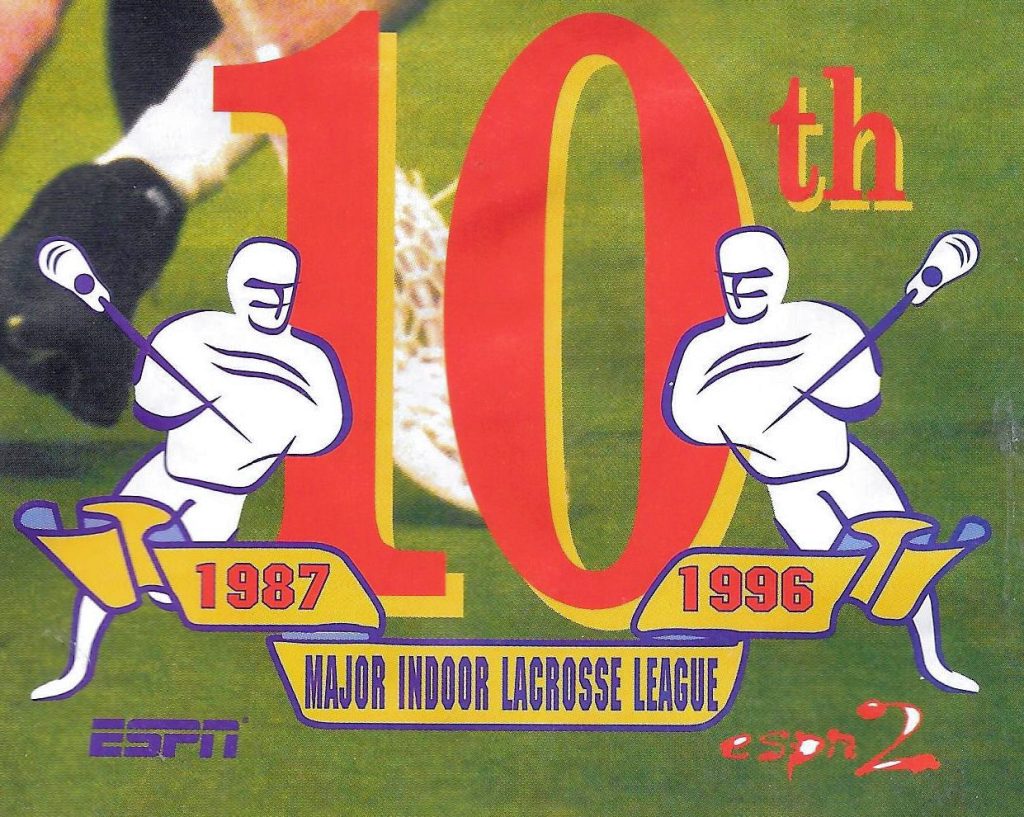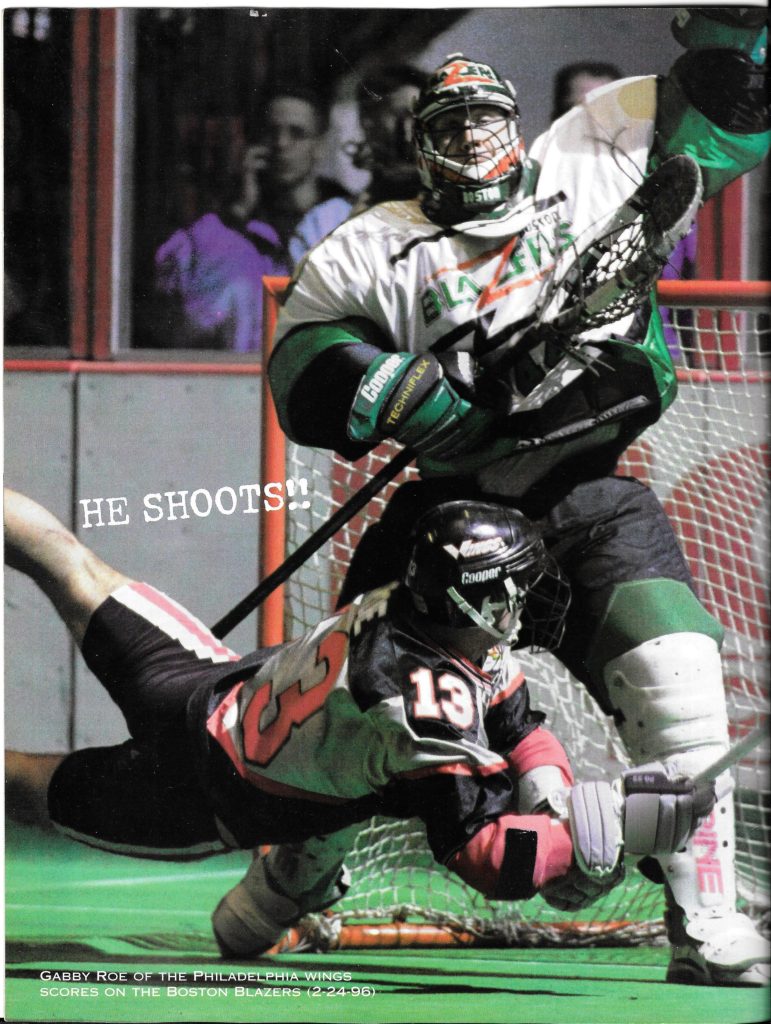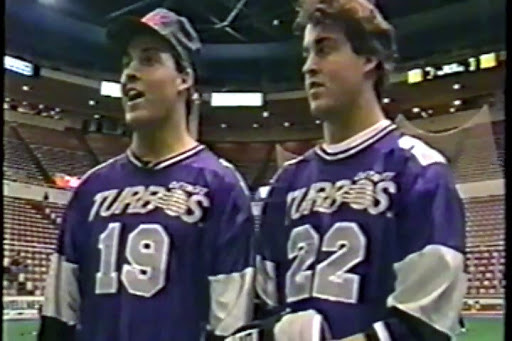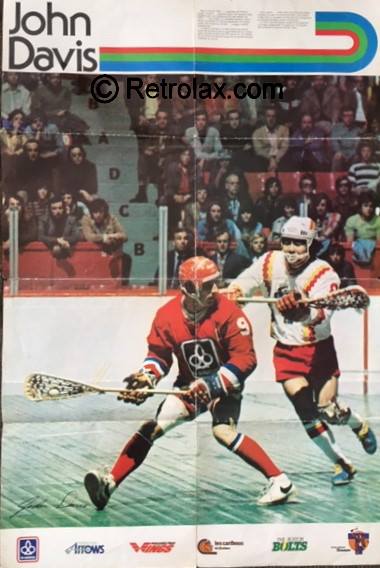By NEIL STEVENS The Canadian Press

Average attendance last season was 16,700 in Philadelphia and 15,800 in Buffalo. The pace is fast, the hitting is heavy and many of the best players are Canadians.
Welcome to the Major Indoor Lacrosse League.
The MILL, in its 10th season, has prospered after many other failed attempts at popularizing box lacrosse on a large scale. Now it is on the verge of a major breakthrough.

“There is a future for this, an opportunity to make this a very big sport,” league co-owner Chris Fritz says from his Kansas office.
Besides Philadelphia and Buffalo, there are teams in Boston, Baltimore, New York, Rochester, N.Y., and Charlotte, N.C. Each team has a 10-game schedule.
Playoffs are in April.
It’s a unique operation. Fritz and Russ Cline, partners in a construction company and promoters of a variety of sports and entertainment events, each own 40 per cent of the league they founded in 1987. World Sports and Entertainment, a New York firm, owns the other 20 percent.

Fritz and Cline were looking for a sport to invest in when they got hooked on lacrosse after viewing video highlights of action from the National Lacrosse League, which operated in 1974 and 1975 and included teams in Toronto, Montreal and Quebec City.
ESPN, a cable sports network, has been involved for many years and this season is carrying 13 regular season games plus playoffs.
In Canada, TSN has picked up the playoffs in the past.
“I think we’ve developed an incredible product,” Fritz says. “ESPN is high on it and we have sponsors excited about seeing it go to a higher level.
“All the rules changes we’ve made and the tough times we’ve lived through have paid off in a brand of lacrosse that anybody who watches it or participates in can be totally proud of. We’ve come up with this hybrid game from 10 years of trial and error.”
Fritz says he can see, within three years, an 18-game schedule for each of 10 to 12 teams split into divisions.
Rather than general managers for each team, the MILL has two executive directors – Niagara-on-the-Lake’s Mike French, who now lives in Philadelphia, and John Mouradian, a St. Catharines high school Phys-ed teacher.
It’s part-time work – one of the ways owners have kept costs down – for the former players.

“We spend a lot of time working on the rules to make the game entertaining,” says Mouradian. “We’re always picking up the pace — not that it hasn’t been fast all along.
“We want it to be the fastest game on two feet.”
Faceoffs occur only after goals.
If a goaltender makes a save and the ball goes into the crowd, the attacking team is handed a new ball and play continues.
If a goaltender is penalized, he must go to the penalty box. The backup goaltender takes over.
A team must take a shot within 30 seconds of gaining possession; the attacking team must move the ball across centre within 10 seconds; and there now is and over-and-back rule similar to basketball.
Offence rules. When Rochester won its home opener 17-11 against New York on Jan. 6, there were 104 shots on goal.
There are 33 Canadian players in the league.

The Buffalo Bandits, coached by Les Bartley of St. Catharines, have the most. They include: John Tavares, Brian Hall and Mike Hasen of Toronto, Jim Veltman, Troy Cordingley and Tom Phair of Brampton, Ont., Jason Luke of Kitchener, Ted Dowling and Neil Doddridge of Mississauga, Ont., Mark Cochrane of Owen Sound, Ont., and Steve Fannell of St. Catharines, Ont.
Six Canadians, including Paul Gait of Victoria, play for the Rochester Knighthawks. Gait’s twin brother, Gary, plays for the Philadelphia Wings. Chris Gill and Rob Williams of Coquitlam, B.C., and Bob Watson of Guelph, Ont., play for the Baltimore Thunder.
Rookies get $200 a game for being part-time pros. A 10-year man can earn $625 a game.
So, why is there no team in Canada?
“When we looked at Quebec and Montreal we couldn’t find a player base,” Fritz says.
“Peterborough doesn’t have a big enough arena.”
“Hamilton? Buffalo thinks we’d be splitting the market in that region.
“Toronto? Everybody wants to talk about it but nobody’s come forward.
“We have such a small schedule that it takes us a lot to break even. Canada has some great players and we’re utilizing them and we want them to play in the league. But … it’s really hard to make money in Canada.
“We’d love to be in Canada. We just haven’t figured out how to do it.”






